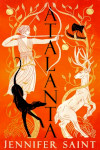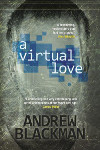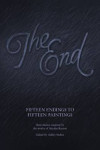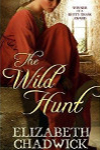Lee Martin – Break The Skin
Posted 19th December 2012
Category: Reviews Genres: 2010s, Angst, Crime, Domestic, Thriller
4 Comments

Anything for you.
Publisher: Broadway (Random House)
Pages: 270
Type: Fiction
Age: Adult
ISBN: 978-0-307-71676-7
First Published: 2011
Date Reviewed: 3rd December 2012
Rating: 4/5
Laney tells her story of why she was arrested for a crime, including all the heartache and tears that led to the moment a trigger was pulled. Miss Baby also tells her story, a tale laced with a similar longing for love but of a differing nature. Both stories, initially separate, join together as gaps in one story are filled by the other and the women find themselves in like situations.
Break The Skin rests quite firmly in “literary fiction” whilst simultaneously keeping both feet in a blend of thriller and crime. At once housing aspects of loneliness and love akin to a YA book, the story touches on issues that place it in an older age range. To say that the novel would appeal to many would be an understatement.
It ought to be noted that the thriller element is quite minor. There is a crime, and a good lead up to it, but the reveal isn’t, perhaps, as surprising or sudden as would generally be expected in a book with such a structure. However this is somewhat negated by the general category as well as the locations and characters.
Because it can’t be said that Martin’s emphasis on personality rather than crime was a bad one, indeed the way the author weaves the two tales together whilst ultimately providing two separate stories is rather compelling. The focus on a need to be loved at all costs puts two characters that are otherwise very different in the same box, literally at times, and keeps the threads tied even when they seem loose. Martin’s characters, especially Laney, are at the extreme ends of neediness, but they surely demonstrate a reality that isn’t given enough notice in our world. Perhaps the saddest part is that both situations could have been avoided, in particular Laney’s, if things were just that little bit different.
Thus, neediness being prominent, the possibilities for manipulation and the way a person in need can do the wrong thing, or anything that isn’t appreciated either way, are centre stage. What’s interesting is how Martin includes the manipulation – it’s subtle, sometimes barely apparent, but there nevertheless. And the secondary characters, such as parents, show how easy it is for others not to notice everything that is happening, to only see part of the story, and thus to make the situation worse. And in Miss Baby’s case, one manipulates another, letting them think the other is manipulating them.
The writing is generally good, although sometimes a bit “clunky”. However there are occasions where accents or dialects are used which can help a reader unfamiliar with the setting, and cultural references tend to be explained well.
The differences in time between the two narratives are incredibly interesting, not just for the changes in setting but for the periods themselves. Whereas Laney’s story, the more informed story, takes place over a number of months, Miss Baby’s is after the event and shows the affects of that event on one of the characters. In a way it could be wondered how relevant Miss Baby is besides being akin to Laney in status, because Miss Baby doesn’t really play much of a part to her Donnie’s story, but it allows Martin to demonstrate feelings, and how people don’t always realise how another feels for them.
Witchcraft makes a play for the reasoning behind the crime, and its inclusion is interesting. Martin doesn’t take a side; he shows how the occult could have an effect, whether real or as a consequence of belief, as well as showing how it might not have played a part at all. He allows space for suggesting it’s a bad thing that affects lives, and space for suggesting it doesn’t work. His handling is objective and includes all sorts of perceptions.
Break The Skin deals with people being very down on their luck, as well as those who believe they are but are in fact not. It shows how a person can easily slide from ambition and self-worth to thinking they are nothing, and highlights the differences in worlds that can allow that to escalate. Its characters are not particularly special, and it’s for that reason the premise and themes work, because they are so normal. Even the fact that there is nothing to recommend them works in Martin’s favour.
In the case of this book, extra analysis may prove indispensable, due to the way that the book can, on the surface, appear dull. Because there is a lot to Break The Skin, and in a way the title is apt far more than in view of the narrative. Martin’s thoughts are there, but he wants you to really think about it, instead of handing it to you on a plate and making it easier to read and forget. Once you break the spell, you’ll see it all.
I received this book for review from Crown Publishers.
Related Books
None yet.
Jesse Blackadder – The Raven’s Heart
Posted 12th December 2012
Category: Reviews Genres: 2010s, Domestic, Historical, LGBT, Political, Romance, Social
5 Comments

Nothing but the castle.
Publisher: Bywater Books
Pages: 454
Type: Fiction
Age: Adult
ISBN: 978-1-61294-027-4
First Published: September 2012
Date Reviewed: 10th December 2012
Rating: 4.5/5
Please note that this book is the fictionalised story of the author’s family and therefore there are a lot of references to “Blackadder” that will not necessarily refer to the author herself.
Alison Blackadder, instructed by her father to become invaluable to Mary Queen of Scots with the aim of retaining Blackadder castle, begins a life of deception. Having been brought up as a boy in order to mask her from the family’s enemies, Alison finds it easy to be Mary’s eyes and ears in the city, as well as the sovereign’s guard when Mary wants to see the city for herself. Whilst Mary is unattainable, Alison finds herself attracted to other people, however for all her desires one remains the most important – to stay in the Queen’s favour until the castle is regained.
The Raven’s Heart is a grand epic that combines history, politics, and romance, accompanied throughout by a lot of suspense. Indeed the suspense rarely lets go of the narrative; the story speeds along in no time. And considering that almost the entirety of Mary Queen of Scot’s time in her homeland is included, that is a very fine thing.
The epic nature is very much apparent in the storytelling. The beginning of the book focuses on love – Alison’s feelings for the Queen, and the later relationship with one of the maids – creating a sweeping romance, mini plot points arising where Alison’s sexuality causes religion and taboo subjects to enter the fray. But as the book moves on and decisive blows are struck (literally, if you consider the use of execution in those times), romance takes a step back to allow politics, domestic situations, and social history to stake a claim. In other words, the events that do not relate to Blackadder Castle are from popular record and therefore the author lets the dynastic history take over. This in itself is rather wonderful when you consider that the author set out to tell the tale of her ancestors (albeit somewhat fictionalised to fill in the gaps) and means that both the Blackadder tale and the story of Mary Queen of Scots are given ample time; thereby creating a book that is very broad in appeal. The author wants to tell her family’s story, but she never forgets the period of which she is writing and the interest her contemporaries have in it.
Nevertheless, for all the book moves swiftly, it must be said that at times it can seem a bit like a bullet-pointed list. Whilst there is nothing that feels overly quick or lacking in detail, the reader may wonder why the narrative moves quite so fast, even if it’s obvious that Blackadder has made a conscious effort to strip away any text that is unnecessary. Yet the author does look at some events, both fictional and factual, in great detail, and it should be said that the speed and change of scenes and time are a big part of why the book keeps its suspense. Whether the written structure is complimentary or not will likely depend on the reader.
Regardless of the fact the book incorporates romance, attention should be brought to the way sexuality has been approached. Looking at the surface, so to speak – the reference to same-gender relationships on the book’s cover – it must be said that Blackadder’s use of a cross-dressing bisexual woman provides a fantastic contrast to the violent aspects of male perversion present in the novel. The author shows to good effect the difference between harmless same-sex relationships, and perversion. Given that same-sex relationships and bisexuality are often still linked with perversion today, Blackadder demonstrates the marked difference that surely makes the cause for acceptance easy to see. And most interestingly, in choosing these subjects as well as the references to the liberal court of France, the author openly displays the fact that such ways of living have always been a part of humanity. In so doing Blackadder makes use of the opportunity presented to comment on the way different people responded.
The character of Alison, a woman more aligned with manhood, also allows Blackadder the chance to comment somewhat on gender as a whole, and to study the way in which society’s restrictions on what makes a man or woman creates expectations of how people should act. For example, Alison, having lived as a boy all her life, finds talking in a lower register and walking with a wider gait comes more naturally than the dainty traits of the stereotypical woman, and is able to make a decision as to which traits she would like to adopt from her days as a lady-in-waiting.
Unfortunately, with all the events that have been included, the book does start to loosen its grip on suspense before the end. Depending on how invested the reader is in the story of the castle, this may happen when that thread is tied, partly because it can be a surprise, otherwise the natural winding down of the narrative whilst aiming to detail the rest of the reign inevitably slows everything down. In the case of the castle, the story has finished, and thus the continuation of the narrative, albeit necessary to the dynastic tale, shines less brightly. There is also a short period of personification that whilst aligning with the thoughts of the main character, can feel a little convenient and forced.
However the few negatives are relatively minor. Finding anything really off-putting is rather difficult and it has to be said that Blackadder has done a fabulous job of not only introducing her family to the world, but in providing an accessible account of Mary’s reign. There are times when artistic liberties have been taken with the history, but it is easy enough to discover the reality.
The Raven’s Heart is an extraordinary tale of society, politics, love, and one woman’s aim to get back the heritage that ought to have been hers. It will delight the literary interests of a myriad of readers, and perhaps most of all it warrants that the name Blackadder should no longer be confined to a British television series.
I received this book for review from Historical Fiction Virtual Book Tours.
Related Books
Roelof Bakker (ed.) – Still
Posted 5th December 2012
Category: Reviews Genres: 2010s, Angst, Art, Domestic, Political, Science Fiction, Short Story Collections, Social
6 Comments

Visuals, the written word, and a vast reach.
Publisher: Negative Press
Pages: 171
Type: Fiction
Age: Adult
ISBN: 978-0-9573828-0-0
First Published: 2012
Date Reviewed: 14th November 2012
Rating: 5/5
Still is an anthology of short stories by an international mix of 26 writers. Each story is based on inspiration gained from a certain photograph. The concept of Bakker, credited as the editor, the book invites new interpretations of his photographic work. With submissions from writers such as Evie Wyld and Jan Van Mersbergen, and including some up-and-coming authors, the book is an assortment from the industry as a whole.
Combining artistry and writing, Still is a work stunning in both presentation and textual content. Not only are the photographs wonderful to look at – the oft-used macro details, the sharpness and detail, the sheer truth of the emptiness that engulfs you perhaps even more so than it might in real life – the design of the book is as much a strong point as the rest. Whilst for Bakker the photography is important, the book itself almost favours the writing, the photographs covering only 3/4s of a single page per story, the rest of that page given to the title. This makes it truly a book for those interested in either subject as well as those interested in both. Bakker took centre stage for his photography exhibition, and in continuing the theme by incorporating the stories and putting them first he has ensured the longevity of his own work, longer than it might have been otherwise.
The fantastic thing about the stories in Still is something Bakker notes in his introduction – often the writer has taken the photographic inspiration and run with it, leaving behind the notion of the derelict town hall. This means that there is a rough three categories of writing: the story based entirely around the photograph and its context, the story that starts with the photograph before leaping somewhere else, and the story that uses the photograph as a cleverly integrated device. Whilst the stories are in nature quite similar, which will be discussed in due course, the differences mean that the book never loses its brilliance, never becomes dull.
‘…entering or exiting through a doorway serves as an “event boundary” in the mind, which separates episodes of activity and files them away.’
The book is incredibly international, with authors from all over the world contributing stories that highlight particular cultures, and bring into focus the similar experiences that everyone faces. And “faces” is the right word – these are not joyous stories, indeed some are harrowing, and most share an interesting sort of disconnect. This disconnect is between reader and the character and it almost emphasises the vacant nature of the town hall, which when you think of the way some stories do not reference the hall, makes for a whole new topic of discussion. Similar too is the basic storytelling method, one of the reasons the book is so disturbing in that fascinating way. The often sparse language, the difference in dialects and speech patterns that don’t necessarily conform to the author’s choice of setting, and the hard-hitting atmosphere these elements bring to the table.
There is a specific theme that runs through most of the book, that of politics, society, and domesticity. They may be different subjects generally, but the way they are all compiled in one binding effectively puts across the fact that they are connected. Though it is not as simple as saying that politics affects society that affects domesticity. In addition there is the theme of self and how one fits into the world. There are stories focusing on themes such as cleaning an old work place that was important to the person, a loss of place in the life of one’s child, seeking sanctuary in the church, the difference between sisters, and the loss of self and identity that can happen after an accident.
Burdensome womanhood: inviting unwanted attention from unsavoury men who give themselves permission to see a young sapling as a full-grown tree, ready to be mounted. Tiresome womanhood: bringing with it expectations of marriage, of fecundity and of the fruit of the womb. Worrisome womanhood: ushering in responsibilities and tentative, anxious dreams for one’s offspring. Militant womanhood: in a state of perpetual readiness to do battle, a lioness ready to kill for her cubs.
Bakker has achieved his aim of creating something new from something already existing, as well as creating an art book, a literary work, and a combination of both. Still would make a superb addition to the shelves of anyone who favours the freedom provided by short stories and the quick dose of cerebral reading that accompanies them.
The quotations used in this review were taken from the stories of Justin Hill and Barbara Mhangami-Ruwende respectively.
I received this book for review from the editor, Roelof Bakker.
Related Books
Jim Al-Khalili – Paradox
Posted 21st November 2012
Category: Reviews Genres: 2010s, Science
2 Comments

Some paradoxes aren’t paradoxes at all.
Publisher: Broadway (Random House)
Pages: 292
Type: Non-Fiction
Age: Adult
ISBN: 978-0-307-98679-5
First Published: 12th April 2012
Date Reviewed: 1st November 2012
Rating: 4/5
Professor Al-Khalili demystifies a number of scientific paradoxes, aiming to make them understandable to the casual reader. As such the book will likely seem juvenile to a more experienced enthusiast and is recommended for those without a scientific background.
“One reason there are no time travelers among us today is simple: time machines just haven’t been invented yet.”
A welcomed element, albeit that you might expect it, is the laid-back writing style Al-Khalili has employed for the book. It fits the overall intention – making the descriptions clear (for the most part – sometimes explanations without large scientific descriptions are understandably difficult). The “narrative” if it can be called so, sometimes seems rushed, but if read with a dip-in approach this likely will not matter. The love and enthusiasm Al-Khalili has for his subject, and his wish to impart the information to the masses is obvious and one of the biggest draws of the book. Even when he falters, this wish remains, and it will keep you reading.
Because unfortunately there are times when Al-Khalili falters. The book is at once apologetic for geekiness (surely not needed if one has decided to read the book themselves) and a little elitist, and it is the elitism that causes the problem; Al-Khalili, whether meaning to or not, ends up belittling the reader. The first cases are forgiveable, for example, “in case you are nervously wondering what you’ve let yourself in for” – in which the author is obviously anxious that he keep your interest and trying to make up for the scientific terms he inevitably has to resort to. But as the book continues this effort to be understandable to the layman comes off as prejudice: “I should warn you now, though, that however carefully I try to explain it you will probably be left with a sense of it slipping from your grasp.” This is a nicer example, some are quite strong, but even here you can see the idea that is in Al-Khalili’s head, that his reader will not be able to understand what he says even if it has been explained clearly. If every instance was accompanied by a difficult scientific theory, it would not matter, but on so many occasions the concepts Al-Khalili hopes the reader will grasp are, in fact, described adeptly by the writer himself, and thus likely easy for anyone who has so much as heard of the word “science” before.
This means that sometimes Al-Khalili ends up sounding as though he were preaching to a reluctant scientist. It’s a case of him trying to teach people science without wanting to teach them anything for fear he’ll lose them.
However due to the very nature and complexity of science, the reader will inevitably come away having learned something. A bare basis knowledge of quantum physics will help, but it isn’t necessary. Assuming you are in the least bit interested in science, which is to be assumed really, since you are reading the book, you will likely find something in it to fascinate you, whether that is the dissection of the paradoxes or the extra knowledge Al-Khalili has added. The author does go off on a tangent sometimes, an aspect of his enthusiasm, but he always relates it back to the main question at hand and it is generally the case that the tangent he explores will aid comprehension of a later paradox to be discussed. It ought to be said that Al-Khalili’s tone is undeniably British and in a way stereotypical of the stereotype – he writes like you’d expect a scientist to write.
And although the subject matter of the book is limited, paradoxes in quantum physics, the discussion is broad. There are sections for those interested in astronomy, sections that relate to science fiction (time travel, for instance), as well as your standard physics ideas. Concepts such as the Theory of Relativity and the as-yet-to-be-overturned rule that nothing exceeds the speed of light, are included and ensure a well-rounded experience. If you’ve ever had the slightest interest in particles, you’ll find a friend in Al-Khalili. The subjects have clearly been chosen to satisfy both the general public as well as those with a little knowledge, and the obvious addition of Al-Khalili’s own interests.
There are times when the author will make statements that you might find yourself questioning the statement: “We can never defeat the Second Law of Thermodynamics. Always remember that.” This happens mainly because of the nature of the book; Al-Khalili will remind the reader that science is always developing, but at other times he will make a closed statement. This element may in fact prove to make the book a better read, as the layman (who somewhat relates to Al-Khalili’s suggestions of philosophers with unscientific backgrounds making brilliant suppositions) is free to disagree with the author within the confines of their own mind.
Albeit that there may already be numerous science books for the layman, the sheer amount of information, the casual style of writing, and the obvious benefits that come with having an author who teaches in person the very things he is writing, ensures that Paradox is one you’ll want to flick through and consider in your quest to learn more.
I received this book for review from Broadway Paperbacks.
Related Books
Elizabeth Chadwick – The Champion
Posted 14th November 2012
Category: Reviews Genres: 1990s, Domestic, Historical, Romance, Social
5 Comments

A moment of weakness, a lifetime of ambition, and a hope for happiness somewhere in-between.
Publisher: Sphere (little Brown)
Pages: 499
Type: Fiction
Age: Adult
ISBN: 978-0-7515-3869-4
First Published: 1997
Date Reviewed: 12th November 2012
Rating: 5/5
Alexander turns up on his brother’s tourney circuit, having run away from a deprived monastery. Hervi agrees to take him on, but he’ll have to start at the bottom of the career ladder. If career is what one can call the dead-end “work” that Hervi does. The brothers share their time with the Cerizays, Alexander getting on well with Monday who is close to him in age. It’s a good familial relationship for the most part, until the night both teenagers get drunk and the atmosphere becomes intimate. But Monday doesn’t want the life Alexander offers, a continuation of the life they already lead – she wants the riches her mother once possessed. But leaving it behind won’t be easy after what has happened between them, especially with the added threats posed by Alexander’s enemy and Monday’s earl of a grandfather.
The Champion is a particularly good work. Focusing on ambitions of ordinary people, the personalities of the characters allow the story to move between varying locations and social classes, giving the reader a broad overview of life at the time. The characters also allow for some leadership history also, as whilst the hero, heroine, and their family, are creations of Chadwick’s mind, many others are from the past.
And what fine creations those fictional characters are. As always, Chadwick has conjured some well-rounded people, with many things to both worry about and enjoy, but although they are very likeable, they aren’t without flaws. Indeed part of the plot, the need to better oneself, is cause for a large part of the separation between Alexander and Monday, and there is a place for domestic history too.
Neither Alexander nor Monday start out particularly faithful where sexual relations are concerned, which leaves Chadwick able to examine subjects such as prostitution, sexual favours, and in regards to sex in general, contraception. The latter is particularly prominent in this novel, being discussed by the women openly when they are away from the men, showing the power that a woman could yield over her body when the information was attainable. Whilst a little of the information has been fashioned by Chadwick (she acknowledges this in the back of the book) the vast majority is true to life and demonstrates that things weren’t nearly as straightforward as illustrations may first suggest. Indeed far from being happy with their lot as mothers, Chadwick’s book shows that women in the Middle Ages were just as concerned with pregnancy as we are now, and that away from the obvious issues of childbirth in an unsanitary age, the idea of women being married to pro-create was often limited to the men of the family.
Aside from this, time is spent on sexuality, with Chadwick demonstrating the affects a forced monastic life could have on monks – both on those targeted and those who shouldn’t really have been ordained in the first place, and also the issues that arose in a society where being homosexual was acknowledged but frowned upon. What is nice, where the latter is concerned, is how Chadwick shows that people could still command respect and loyalty, though of course the jokes and the fact that it wouldn’t be the case for less well-off people show society for what it was. And no holds are barred when explaining King John’s marriage to a twelve-year-old – you are told that it happened even if the actual intimate details are left out.
Of course a historical romance would not be such without the sex. As is generally the case, Chadwick both creates spice and closes the door.
Chadwick favours bold females, however in Monday’s case she has laced this boldness with a strong stubbornness that takes some getting used to. Whilst Monday is admirable most of the time, some of her choices may be difficult to fathom, and the consequences of conduct are demonstrated to good effect. Yet Chadwick never suggests that Monday gets what was coming to her; aside from a conversation of how choices have affected lives, Chadwick remains fair, treating her flawed heroine as she would an angelic one. This means that Monday is very real.
Sharing the basic ambition of betterment, Alexander also strays from his path, attracted by a potentially glittering career. He is more grounded, perhaps, than Monday, but this helps the development of both of them flourish, enabling differences both in the subject of their ambitions, and the strength of them, to be discussed fully. Part of the reason the book works so well is this constant evaluation of their development.
And whilst many of Chadwick’s books have family members included, Hervi is an exception. He gets his own storyline, his own development, and continues to play a role. Perhaps best of all, he is funny without being a comic relief, and his thread is just as important as the others.
There are several encounters with the enemy, meaning the concept can feel overused, but it’s important to remember that it is realistic, too. It shows just how crucial family was seen to be, even where there were separations.
A major boon of this book is that unlike many of the others, the plot of The Champion stays right until the end – compared to, for example, Lords Of The White Castle, where the last few chapters seemed to be holding on to a horse that had bolted. This is in part due to the multi-layered story, and the myriad of extra issues that the characters have to deal it – it enables the book to be lacking in dull moments. In addition to this, the story takes place over a few years, with little time spent off page, as it were. In other words you will never turn a page to see a date a few years later after having read something compelling in the last chapter. There are some gaps, but they are minimal, short enough for the reader to be able to guess what would have happened.
The Champion is Chadwick at her best; a detailed novel that includes both fact and fiction, plenty of culture and social politics, a drawn out romance, and ordinary people you can root for. The addition of extra historical issues is a further recommendation and the icing on the cake. To put it simply, if you know little before starting this book, you will know a lot once finished, and unlike the basic information provided by basic education, you will come away knowing a great deal more; and with the added bonus of knowing how it relates to our present day and how far our society has come.





































